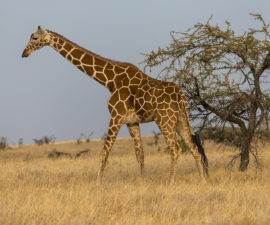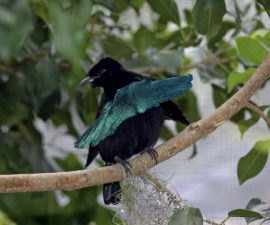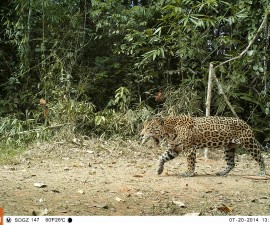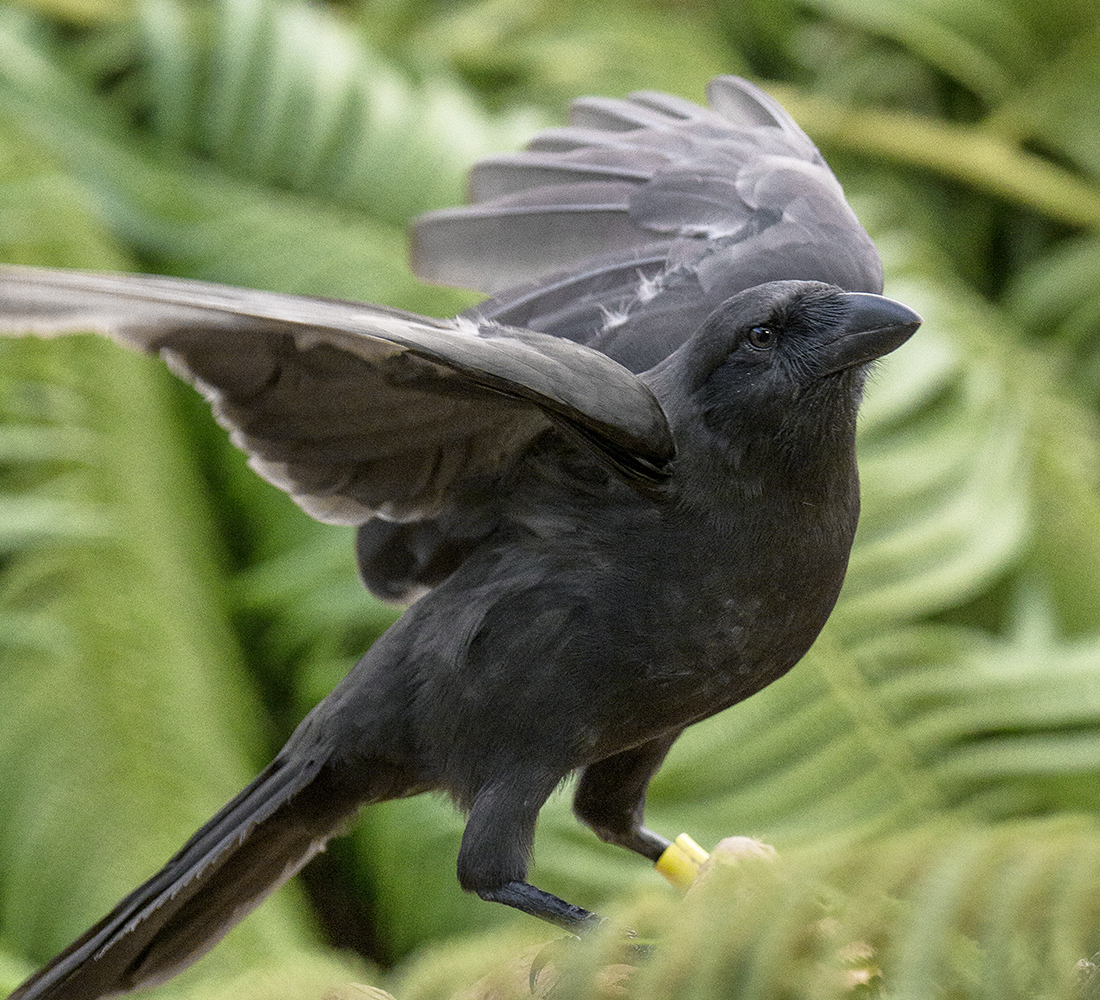
Flying Free—Again
Extinct in the wild since 2002, the alala has been reintroduced to its native forest on the Big Island of Hawaii.
BY Eston Ellis
Photography by Ken Bohn
When a bird thought to be destined for extinction begins to make a comeback, it’s definitely something to crow about—especially when that bird is the alala Corvus hawaiiensis, often called the Hawaiian crow. Like the California condor, Hawaii’s alala is being successfully bred in managed care, in an effort to build a healthy population for return to its original habitat. The common name “Hawaiian crow” barely begins to describe the alala. It is a rare bird that is culturally significant in Hawaiian tradition, considered to be an ancestral spirit guide. An extremely vocal and gregarious bird, the alala is one of only a few bird species known to use tools: it uses twigs to obtain food it cannot reach with its bill.
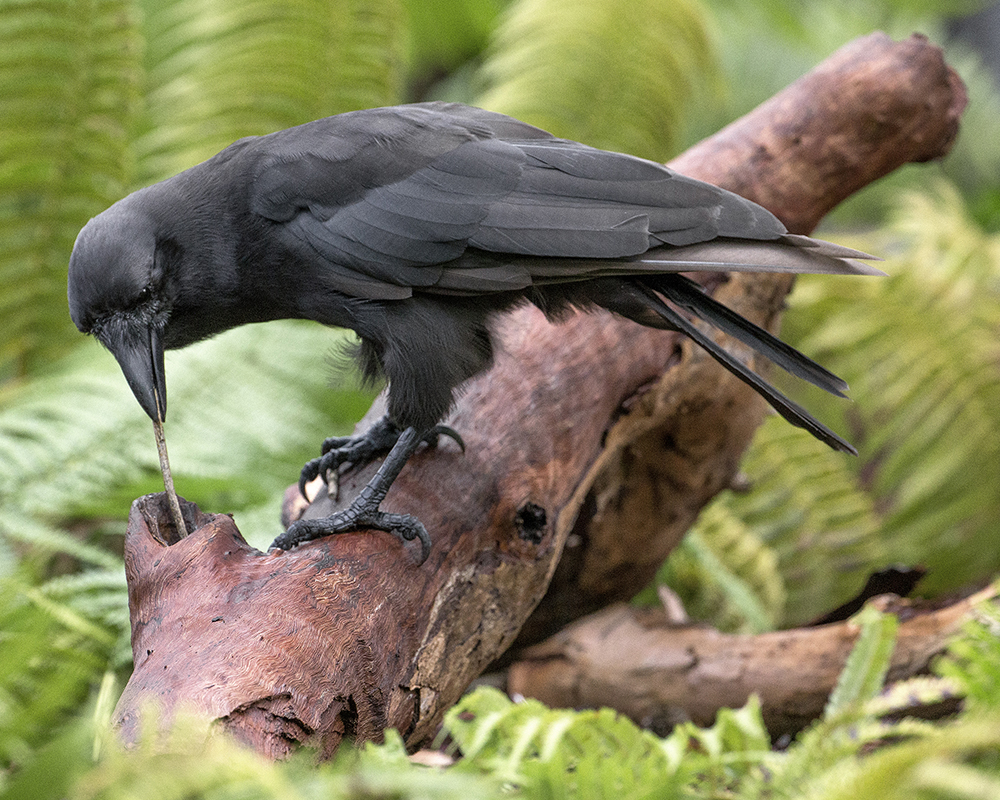
TOOL TIME
Alala use twigs as tools, to go after food in hard-to-reach places.
The alala is also environmentally significant, as a key disperser of seeds to help native forest plants flourish. Sadly, for most of the past two decades the alala has been extinct in the wild, as a result of decreasing forest habitat, introduced predators including feral cats, and habitat degradation from livestock. When the birds’ wild total population dropped to fewer than 20 individuals, the survivors were brought into breeding centers to help the species recover.
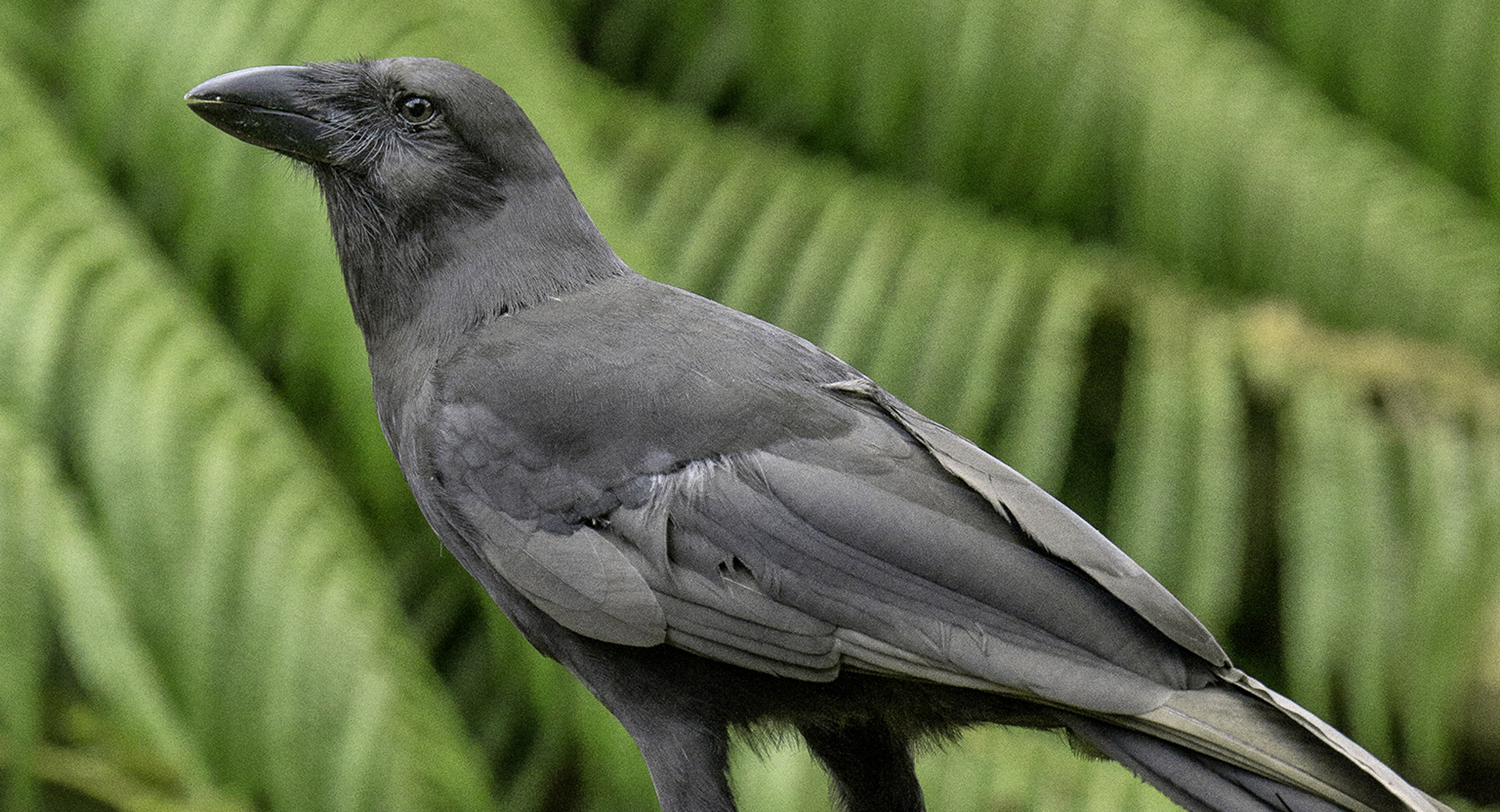
 Alala use tools—sticks—which they maneuver to dig out and retrieve food they can’t reach with their bills, such as an insect hiding in a log.
Alala use tools—sticks—which they maneuver to dig out and retrieve food they can’t reach with their bills, such as an insect hiding in a log.
Lessons Learned
In 2017, 11 of these iconic birds were returned to their native forest, via releases coordinated by San Diego Zoo Global’s Hawaii Endangered Bird Conservation Program (HEBCP) and our partners. The birds were released into the Pu’u Maka’ala Natural Area Reserve on the Big Island of Hawaii on September 26 and October 11, 2017, and initial signs look good for their future there, said Bryce Masuda, conservation program manager of San Diego Zoo Global’s HEBCP. Before the releases, the birds—which were among 142 living at San Diego Zoo Global’s Keauhou and Maui Bird Conservation Centers—were moved to a large pre-release, flight-conditioning aviary in the reserve, where they spent months acclimating to the sights, sounds, and conditions of their new habitat in preparation for their release.
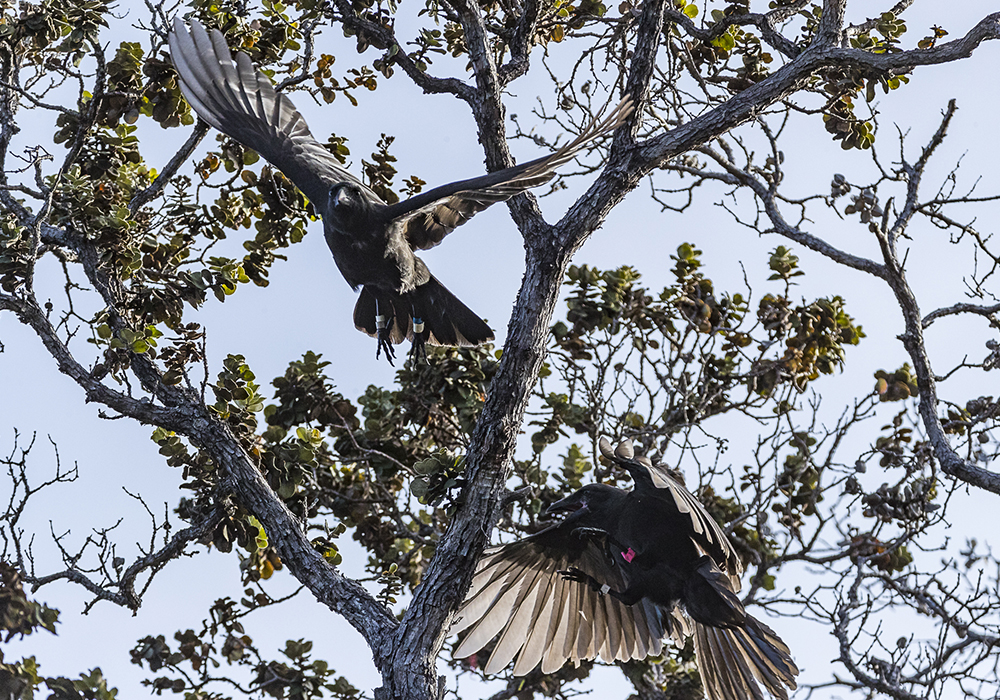
TRACKING THEIR PROGRESS
Researchers are keeping track of the movements of recently released alala, which can be identified by their leg bands and located via tiny VHF radio transmitters.
This is not the first time a release has been attempted to bring alala back to their island habitat. In 1992, the U.S. Fish and Wildlife Service asked a team from San Diego Zoo Global, The Peregrine Fund, and Greenfalk Consultants to come up with a conservation plan for alala, in an effort to save the species. Rear and release efforts began in 1993, originally managed by The Peregrine Fund. Chicks were successfully hatched, and the first releases of 27 juvenile alala took place from 1993 to 1998. Unfortunately, 21 of those initially released alala died from disease or predation, or disappeared.
After more than 15 years of working with alala, the captive population finally exceeded 100 birds, and 5 birds participated in a release in December 2016. Unfortunately, that release was curtailed after two of the birds were killed by another endangered bird native to the area: the io, or Hawaiian hawk; and a third died as a result of poor body condition after a storm event. The two surviving alala from the release group were brought back to the flight aviary.
However, many lessons were learned from that release, and changes were made in planning for the 2017 releases. “We are now at the point where we’re comfortable enough to be able to release alala into the wild,” said Alison Greggor, postdoctoral research associate in Recovery Ecology for the San Diego Zoo Institute for Conservation Research. “The area is a few kilometers away from the previous (2016) release site. We wanted to move outside the area where the previous io predation occurred, to give this group a head start. It’s a slightly higher elevation, and it’s a little drier, but it’s still within their native forest, so they have lots of insects and native fruits to forage on here.”
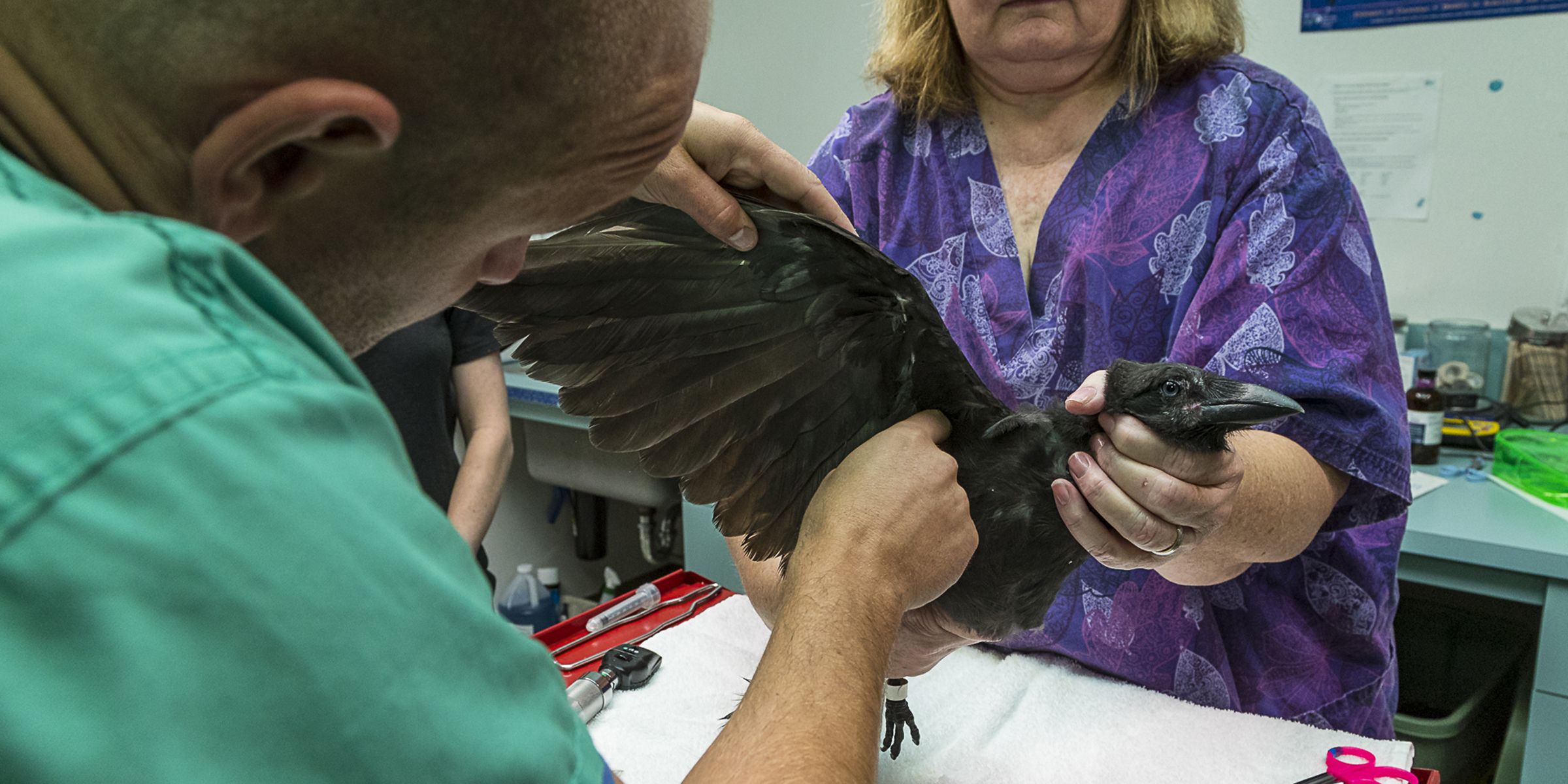
 Alala were put on the federal endangered species list in 1967.
Alala were put on the federal endangered species list in 1967.
Planning a Successful Return
If the alala do encounter io in the forest, the predator-aversion training they received prior to their release will help them react effectively to a threat. “We tested a variety of stimuli to see which generated the strongest response for the alala,” Alison explained. “We played recordings of different distress calls and alarm calls, and looked at their reaction to each. We flew a taxidermy io over them to see how they would react. We presented a plastic io, and then a live io, to assess their reactions. Based on all these trials, we came up with a predator-aversion plan with a combination of stimuli that elicited the strongest response.”
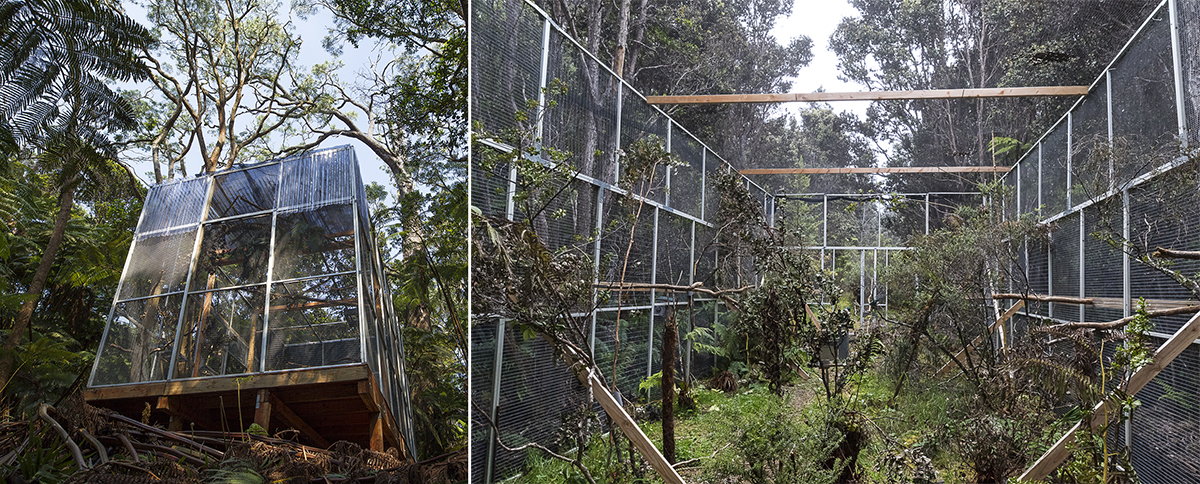
PREP SCHOOL
Alala acclimated to the sights, sounds, and conditions of the forest where they would be released while inside a large pre-release, flight-conditioning aviary in the reserve.
Researchers watched the one-year-old release candidates carefully, to gauge how the birds interacted and to determine which ones had the closest relationships. “In the first release group, we included six birds that are more likely to spend time together,” Alison said. “The purpose is to ensure that after their release, they will continue to remain socialized with each other. If one wanders off by itself, it is more likely to become vulnerable to predation, stress, or not finding food. When they are together, they are helping each other.”
While the released birds have been familiarized with native fruits and other food sources in the forest, supplemental feedings ensure that the released birds remain strong and healthy. “This is a soft release,” Alison said. “We’re supporting the alala with supplemental food, which gives them a chance to thrive while they are foraging and learning to find sources of food in their habitat.”
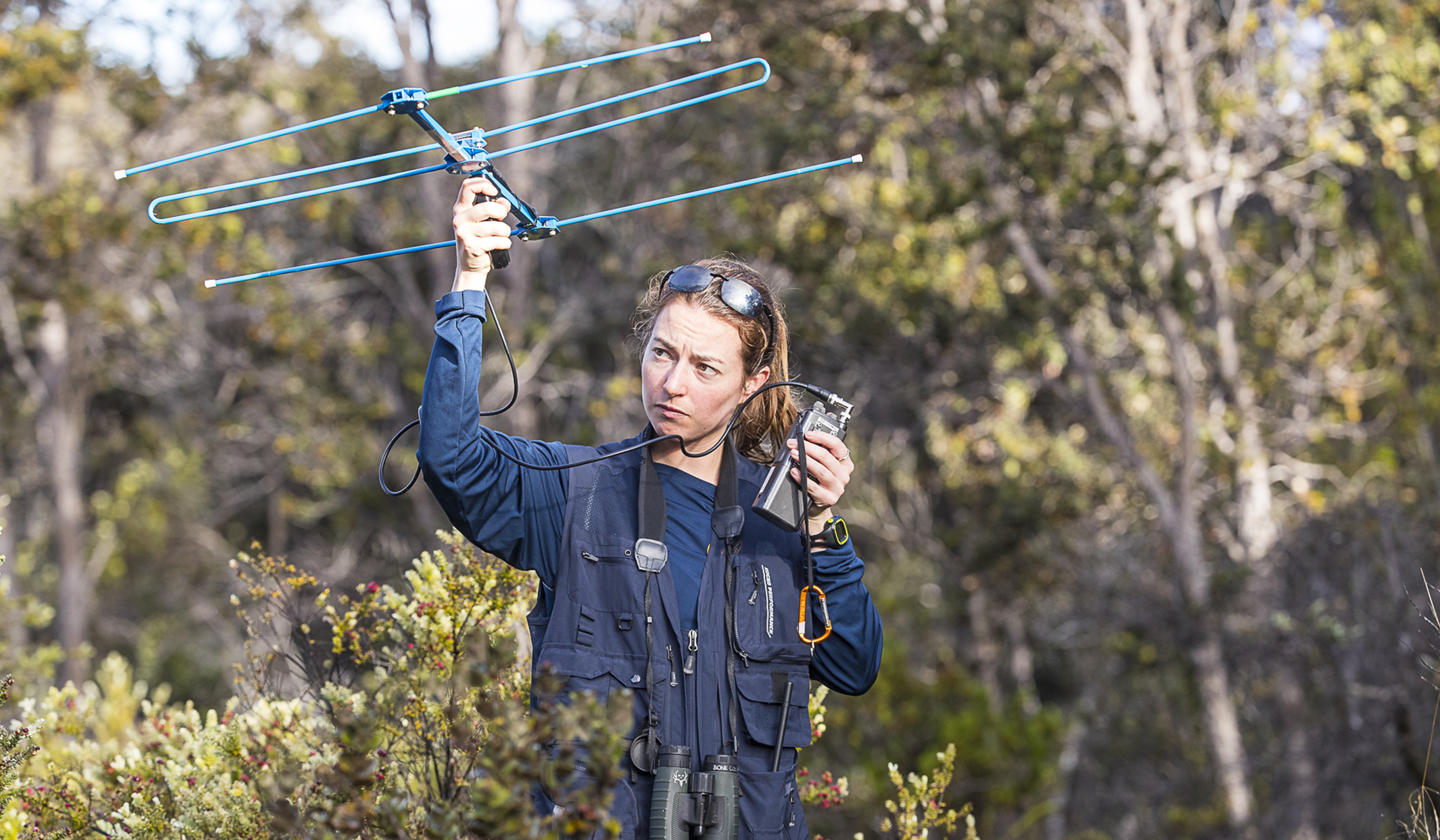
Off They Go
“On the morning of the first release, we had a small cultural ceremony close to the release site, with our partners we have been working with so closely,” said Joshua Pang-Ching, research coordinator at San Diego Zoo Global’s Hawaii Endangered Bird Conservation Program. “We sent the alala off with good feeling and good wishes.” During the first of the two releases, six birds left the aviary to fly free. “The release went very smoothly,” Joshua recalled. “We opened the doors to the aviary at 10 a.m., and the first birds left within 20 minutes. They continued to hang around the aviary, then in about two hours, all of the birds had left. It was great to see them exploring their new environment, flying up to the top of the koa and ohia trees, and foraging for insects and native fruit. We hope to see them feed on even more species of fruit soon.”

NOTHING TO SEE HERE
Researchers in the field who are in close contact with alala wear head-to-toe gowns that prevent the birds from imprinting on humans or associating them with food.
After the releases, researchers tracked the alala through VHF radio signals from each bird’s lightweight backpack transmitter. They also followed their movements visually, to see how the birds are adjusting to their new habitat. “Our team is out in the field every day, tracking the birds and watching their behaviors,” Joshua said. “Basically, we will be learning what we can do to help and support the alala, to help them survive and thrive in the wild.”
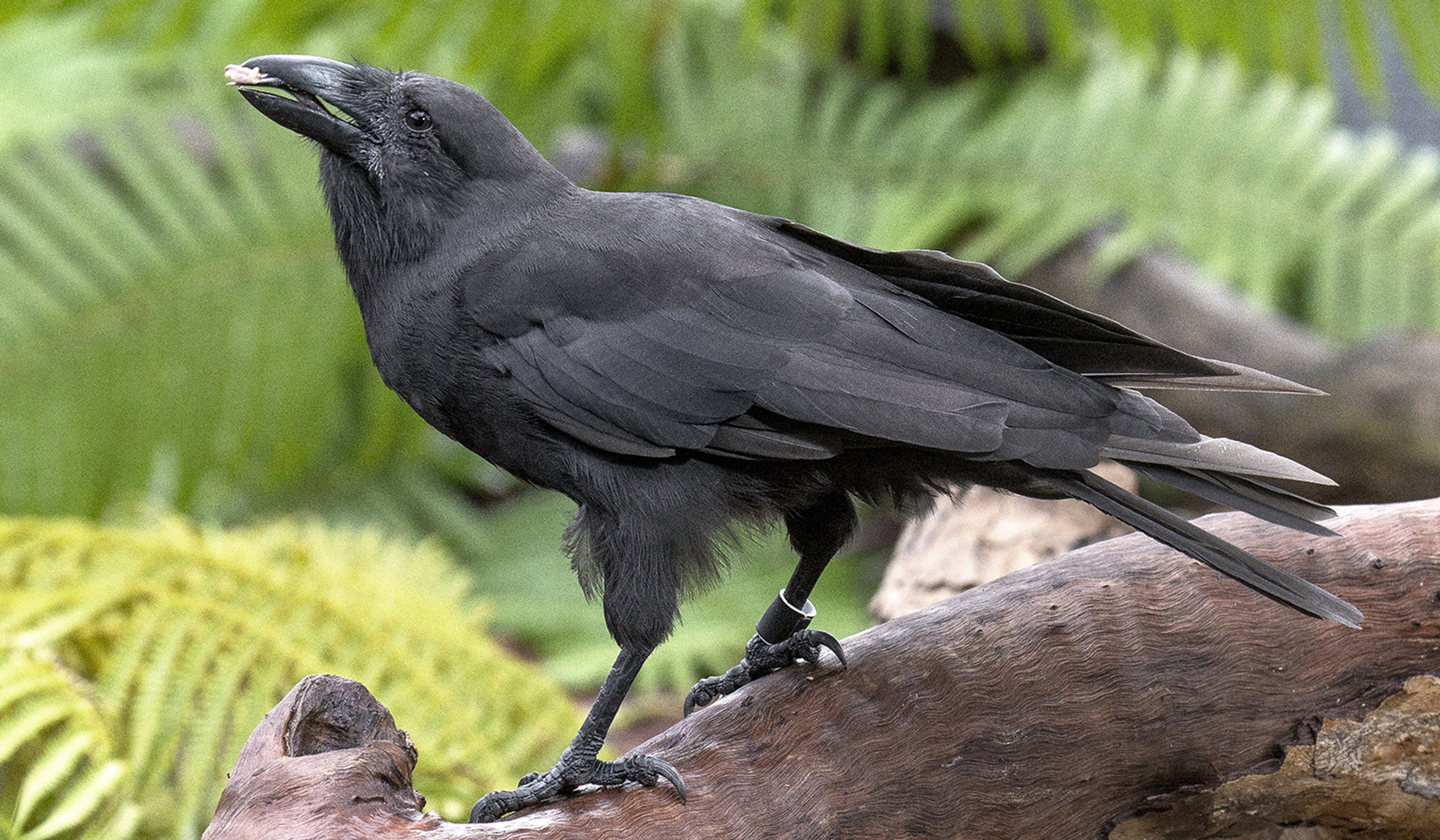
 Fewer than 20 alala existed in total when intensive breeding efforts began at the Keauhou and Maui Hawaii Bird Conservation Centers.
Fewer than 20 alala existed in total when intensive breeding efforts began at the Keauhou and Maui Hawaii Bird Conservation Centers.
Achieving Milestones
In the months ahead, Joshua said he hopes the alala will start making plans for the next generation. “Next spring and summer, we hope to see them pairing up,” he said. “They will be about two years old—which is when they usually start mating, although they may not be successful at first. The birds are usually not successful at hatching chicks until they are about three years old. There will be a lot of learning opportunities along the way.”
The alala reintroduction project continues to be a major collaborative effort, Bryce said. “We’re partnering with so many colleagues from San Diego Zoo Global, and this entire endeavor would not be possible without their efforts. We are here on an island, but we are not an island—we receive so much support from our friends and partners at the Zoo, the Safari Park, and the San Diego Zoo Institute for Conservation Research—along with local landowners, organizations and governmental agencies, and residents in Hawaii.”
 A total of 11 alala were released on the Big Island of Hawaii in 2017: two females and four males on September 26, and two females and three males on October 11.
A total of 11 alala were released on the Big Island of Hawaii in 2017: two females and four males on September 26, and two females and three males on October 11.
Working for the Long Run
Alala have taken a big first step in their return to the wild, but there is still a long way to go before their future is secure. For some perspective, Bryce says to consider the situation of another endangered Hawaiian bird, the nene or Hawaiian goose. “In the 1950s, there were only about 50 nene left,” Bryce said. “Now there are 3,000 in the wild—but it took many years and numerous learning opportunities to get to this point.”
While there are still fewer than 150 alala, Bryce said that number is impressive when you consider that conservation efforts began with fewer than 20 birds. “This is the beginning of the next stage of a long-term commitment to the recovery of the alala in the wild. There will be many challenges, and it will take many years to get there—but it is exciting to get started.”
Reintroduction efforts for the alala are funded by San Diego Zoo Global, the State of Hawaii Department of Land and Natural Resources, U.S. Fish and Wildlife Service, the National Fish and Wildlife Foundation, the Max and Yetta Karasik Foundation, the Moore Family Foundation, American Forests, and anonymous donors. Cooperative partners also include Kamehameha Schools, Three Mountain Alliance, the U.S. Geological Survey, and the National Park Service.

